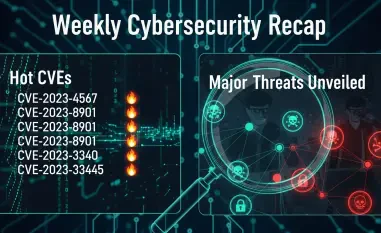Phishing scams have evolved significantly over the years, with hackers employing increasingly sophisticated methods to deceive users. One of the latest trends involves fake Zoom conference phishing attacks, which have resulted in substantial financial losses, particularly in the realm of cryptocurrency theft. Hackers are taking advantage of the widespread reliance on Zoom for virtual meetings, creating links that closely resemble legitimate Zoom URLs. When users unknowingly click on the “Start Meeting” button, they trigger downloads of malicious software instead of launching the actual Zoom client. Meticulously designed phishing pages emulate the real Zoom interface, making it easy for users to fall for these scams.
The Rise of Fake Zoom Conference Phishing Scams
In recent times, hackers have capitalized on the widespread use of Zoom for virtual meetings by creating fake Zoom conference links. These links are often camouflaged with domain names like “app[.]us4zoom[.]us” to closely resemble legitimate URLs. When users click on the “Start Meeting” button, they inadvertently download malicious software instead of launching the actual Zoom application. The phishing pages are meticulously designed to mimic the real Zoom interface, thus making it far too easy for users to fall for the scam.
The methods employed by hackers are highly sophisticated, frequently involving scripts that log activity via the Telegram API. Analysis of these logs has revealed the use of the Russian language, suggesting a possible Russian origin for the hackers behind these attacks. These fraudulent websites, which appear authentic to most users, are typically active for several weeks. During this period, hackers closely monitor their success using the Telegram API, adding another layer of complexity to their schemes.
Malware Deployment and Execution
The malware used in these phishing scams is typically distributed as an installation package named “ZoomApp_v.3.14.dmg.” Once users download and execute this package, they are prompted to run malicious scripts in the Terminal, which often require entering their local administrator passwords. This crucial step grants the malware the necessary permissions to carry out its nefarious activities. This malware imitates the behavior of legitimate applications to prevent detection by users and security software.
Upon execution, the script launches a hidden executable file (.ZoomApp) that is responsible for the malware’s core functions. Static and dynamic analysis of this harmful software has shown that it collects a wide gamut of sensitive information from the users’ devices. This includes system information, browser data, encrypted wallet data, Telegram data, notes, and cookie data. Once collected, this data is compressed and sent to a server in the Netherlands, a server already flagged as malicious. This elaborate method of data exfiltration makes it difficult for users to protect their information and secure their devices.
Financial Impact and Cryptocurrency Theft
The primary objective of these phishing scams is to steal cryptocurrency assets. The malware meticulously collects sensitive information, including wallet mnemonics and private keys, enabling hackers to access and steal users’ cryptocurrency funds. Analysts using tools like MistTrack have traced the hackers’ Ethereum (ETH) address, revealing profits amounting to over $1 million. This substantial financial impact on victims highlights the extent of the threat.
The stolen funds are often converted into other cryptocurrencies such as USD0++, MORPHO, and ultimately ETH. The trail of the funds indicates that they are transferred to new addresses and eventually moved to various cryptocurrency exchanges like Gate.io and ChangeNOW. A significant amount of ETH remains distributed among several addresses identified as belonging to phishing activities. This intricate movement of stolen assets underscores the complexity involved in tracking and recovering the funds.
Preventive Measures and Recommendations
To protect against these sophisticated phishing scams, users must adopt several precautionary measures. Firstly, it’s crucial to scrutinize email links and verify their authenticity before clicking. This step can mitigate the risk of inadvertently downloading malicious software. Users should avoid downloading software from untrustworthy sources and refrain from executing unfamiliar commands in the Terminal. These practices can significantly reduce exposure to potential malware infections.
Regularly updating antivirus and anti-malware tools and conducting frequent scans can also help detect and prevent malware infections. This proactive approach to cybersecurity ensures that systems are protected against the latest threats. Additionally, enhancing awareness about phishing tactics and learning preventive measures from credible security sources, such as the SlowMist Security Team, can significantly reduce the risk of falling victim to these scams. Users are encouraged to read resources like the “Blockchain Dark Forest Self-Guard Handbook” for more security tips.
The Global Nature of Phishing Operations
The involvement of servers in different countries highlights the global nature of these phishing operations. Hackers often use servers located in various regions to obscure their tracks, making it challenging for authorities to trace the origin of the attacks. This cross-national aspect of phishing scams underscores the need for international cooperation in combating cybercrime. By working together, countries can develop effective strategies to identify, track, and neutralize these threats.
Moreover, the use of multiple cryptocurrency exchanges to launder stolen funds further complicates the tracking process. Exchanges like Gate.io and ChangeNOW are frequently used to convert stolen cryptocurrencies into other forms, making it difficult to trace the funds back to the original theft. This highlights the importance of robust security measures and vigilant monitoring by cryptocurrency exchanges to detect and prevent illicit activities. Enhanced collaboration between exchanges and law enforcement can be pivotal in tackling this issue.
The Role of Social Engineering in Phishing Scams
Social engineering plays a significant role in the success of these phishing scams. Hackers use psychological manipulation to trick users into divulging sensitive information or performing actions that compromise their security. The fake Zoom conference links are a prime example of how social engineering tactics can be used to deceive users into downloading and executing malicious software. This sophisticated approach leverages the trust and habits of users to exploit vulnerabilities effectively.
To counteract these tactics, users must be educated about the various forms of social engineering and how to recognize them. Awareness campaigns and training programs can help users develop a healthy skepticism towards unsolicited downloads and meeting links, reducing the likelihood of falling victim to phishing scams. By fostering a culture of vigilance and informed decision-making, organizations and individuals can better protect themselves from these sophisticated attacks.
Conclusion
Phishing scams have evolved significantly over the years, with hackers employing increasingly sophisticated methods to deceive users. Recently, a new trend in phishing involves fake Zoom conference invitations, which have led to substantial financial losses, especially in the area of cryptocurrency theft. Hackers are capitalizing on Zoom’s popularity for virtual meetings, crafting links that closely resemble authentic Zoom URLs. When users unknowingly click on the “Start Meeting” button, they trigger downloads of malicious software instead of launching the official Zoom client. These phishing pages are meticulously designed to mimic Zoom’s real interface, making it easy for users to fall for these scams. This level of deception is particularly concerning given the widespread use of Zoom for business and personal communication. Users are advised to be cautious and verify the legitimacy of Zoom links before clicking on them. Staying informed and vigilant about the latest phishing tactics is crucial to avoid potential financial and data losses.













